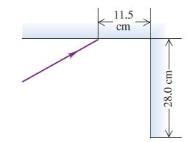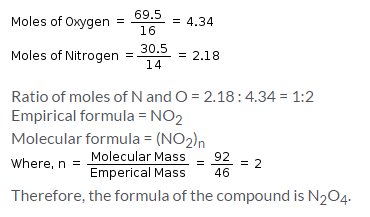Chandigarh TGT Science - Non Medical Mock Test - 8 - SSA Chandigarh MCQ
30 Questions MCQ Test - Chandigarh TGT Science - Non Medical Mock Test - 8
A can do a piece of work in 20 days and B can do the same work in 30 days. In how many days can both finish the whole work working together?
75 g is what percent of 2.25 kg?
What is the term used when you press and hold the left mouse key and move the mouse around the slide?
Select the correct option in order to complete the analogy.
Hong Kong : China :: Vatican : ?
Who was the first Indian male to receive the Bharat Ratna, India's highest civilian award?
Child development mainly focuses on:
Which component of the Government of India has the objective of development of children?
Sequencing in development is constant but the speed is different in:
Right to Education Act-2009 is in implementation for children of which age group?
Potentiometer measures the potential difference more accurately than a voltmeter, because
Two plane mirrors intersect at right angles. A laser beam strikes the first of them at a point 11.5 cm from their point of intersection, as shown in figure For what angle of incidence at the first mirror will this ray strike the midpoint of the second mirror (which is 28.0 cm long) after reflecting from the first mirror?

A convex and a concave mirror of radii 10 cm each are facing each other and 15 cm apart. A point object is placed midway between them. Then position of the final image if the reflection first takes place at the concave mirror and then in the convex mirror is
A converging lens is used to form an image on a screen. When the upper half of the lens is covered by an opaque screen
The graph drawn with object distance along abscissa & image as ordinate for a convex lens is
Which of the following phenomenon cannot be explained by diffraction?
Conversion of temperature into electric voltage is done with
Due to _______ the depth of an optically denser medium appears to be _______ than its real depth.
Coefficient x, y and z are respectively
In the combustion of 4g. of CH4, 2.5 K cal of heat is liberated. The heat of combustion of CH4 is -
A 1-kW radio transmitter operates at a frequency of 880 Hz. How many photons per second does it emit -
What is the lowest value of n that allows g orbital to exist?
A compound contains 69.5% oxygen and 30.5% nitrogen and its molecular mass is 92g/mol. The formula of that compound is:
Carbohydrates are classified on the basis of their behaviour on hydrolysis and also as reducing or non-reducing sugar. Sucrose is a __________.
A cell is prepared by dipping a chromium rod in 1M Cr2(SO4)3 solution and an iron rod in 1M FeSO4 solution. The standard reduction potentials of Chromium and Iron electrodes are -0.75 V and -0.45 V respectively. What will be the standard EMF of the cell?
From the focus of the parabola y2 = 8x as centre, a circle is described so that a common chord of the curves is equidistant from the vertex and focus of the parabola. The equation of the circle is
Find the scalar and vector components of the vector with initial point (2, 1) and terminal point (– 5, 7).
In a class of 40 students 14 take physics and 29 take chemistry. If 5 students take both, how many students take neither of the subjects?























